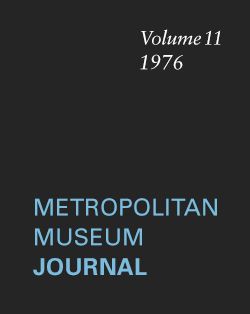Chair back carved in relief
Not on view
This ivory chair back was found in a storage room in Fort Shalmaneser, a royal building at Nimrud that was used to store booty and tribute collected by the Assyrians while on military campaign. Nineteen other similar furniture pieces, probably chairs or couches, were stacked in orderly rows in the same storage room. They are rare examples of ancient ivory furniture still in its original form; usually, the wooden frames holding the ivory pieces together have disintegrated by the time they are excavated, but since these pieces of furniture were buried after the sack of the Assyrian palaces in 612 B.C., their arrangement was preserved.
This piece combines plain flat strips of ivory with four panels depicting winged figures, two male and two female. The female figures wear their hair in long curled locks with a section of short curls at the front, and wear long dresses belted at the waist that reveal heavy anklets worn above bare feet. The male figures have shorter hair, worn as a mass of similar-length curls, and clean-shaven faces. They wear a long coat belted over a short skirt and are also barefoot. Both types of figures hold the curving stalks of plants in their hands. Since all are winged, they are likely intended to be supernatural figures, and their association with thriving vegetation may indicate that they embody concepts of abundance and fruitfulness. These panels are classified as North Syrian in style because of their carving technique; their dynamic composition, in which the image fills the entire frame; and the figures’ characteristic facial features, including large eyes and noses, small mouths, full cheeks, and receding chins. The excavator, Max Mallowan, noted that this panel was restored incorrectly, and that the two male figures should be on the outside rather than the inside. It was also probably curved, although it has been restored as a flat panel.
Built by the Assyrian king Ashurnasirpal II, the palaces and storerooms of Nimrud housed thousands of pieces of carved ivory. Most of the ivories served as furniture inlays or small precious objects such as boxes. While some of them were carved in the same style as the large Assyrian reliefs lining the walls of the Northwest Palace, the majority of the ivories display images and styles related to the arts of North Syria and the Phoenician city-states. Phoenician style ivories are distinguished by their use of imagery related to Egyptian art, such as sphinxes and figures wearing pharaonic crowns, and the use of elaborate carving techniques such as openwork and colored glass inlay. North Syrian style ivories tend to depict stockier figures in more dynamic compositions, carved as solid plaques with fewer added decorative elements. However, some pieces do not fit easily into any of these three styles. Most of the ivories were probably collected by the Assyrian kings as tribute from vassal states, and as booty from conquered enemies, while some may have been manufactured in workshops at Nimrud. The ivory tusks that provided the raw material for these objects were almost certainly from African elephants, imported from lands south of Egypt, although elephants did inhabit several river valleys in Syria until they were hunted to extinction by the end of the eighth century B.C.
This image cannot be enlarged, viewed at full screen, or downloaded.
This artwork is meant to be viewed from right to left. Scroll left to view more.




